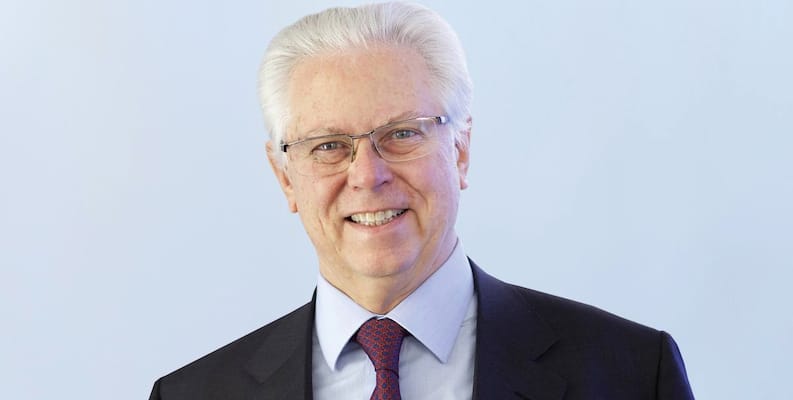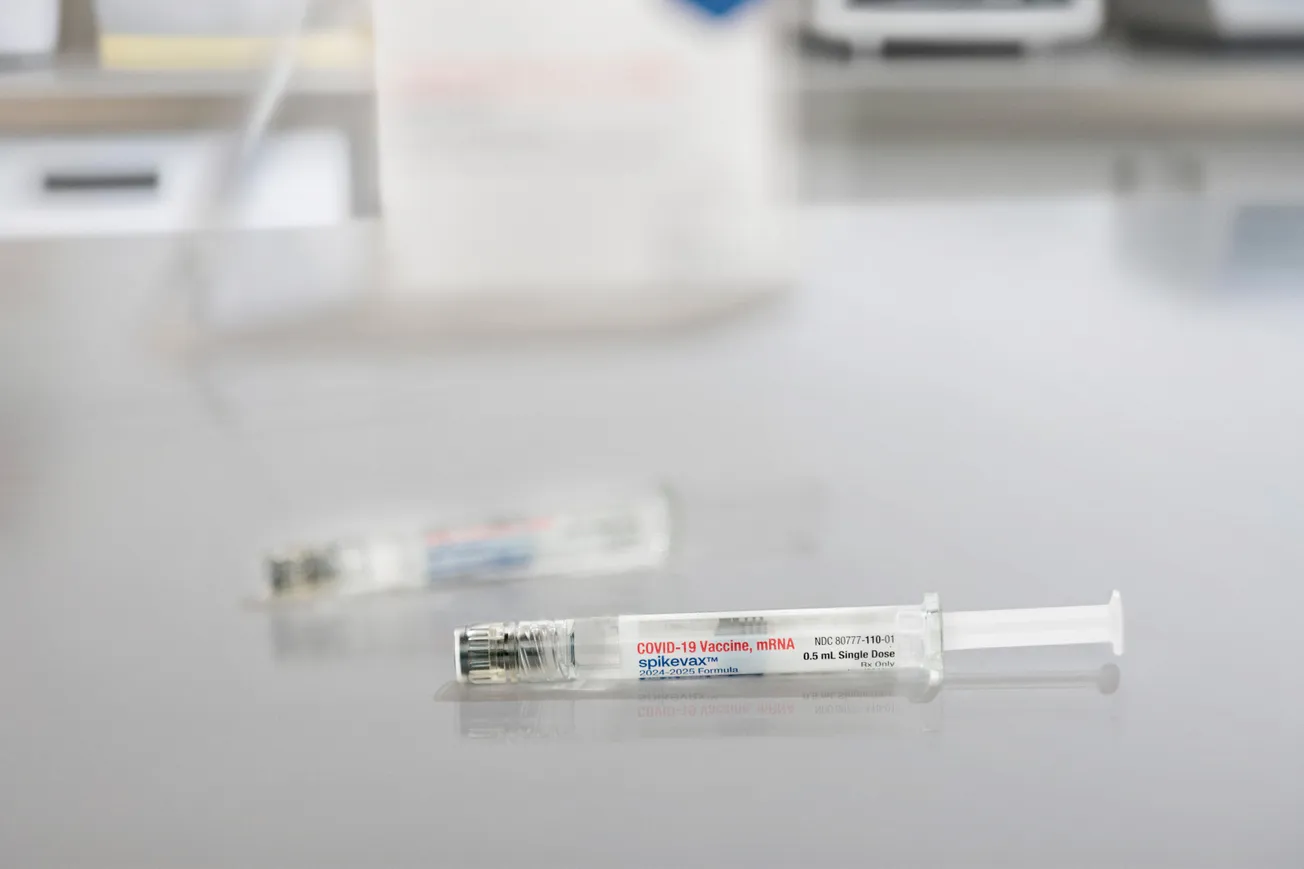DEERFIELD, Ill. — Walgreens Boots Alliance topped Wall Street’s expectations for first quarter sales and earnings, but slashed its quarterly dividend nearly in half.
WBA cut its dividend to 25 cents per share from 48 cents per share, reducing the payout for the first time in nearly five decades.

Tim Wentworth
New CEO Tim Wentworth, who took the helm during the quarter, said the company made “the difficult decision” to cut the dividend in order to strengthen its long-term balance sheet and cash position. The move reinforces the goal of increasing cash flow, while freeing up capital to invest in sustainable growth initiatives in pharmacy and health care, “which we believe will ultimately improve shareholder value,” he said.
Executive Chairman Stefano Pessina added, “The WBA board is committed to ensuring that capital allocation priorities are balanced between investment opportunities for growth, debt pay down, and returning cash to investors. Importantly, we are maintaining a competitive yield as our board continues to view the dividend as a key component to overall attractiveness of WBA to many of our shareholders.”
The dividend yield is now 3.9%, based on Wednesday’s closing stock price. The prior yield was more than 7%, which made WBA the top-paying dividend stock in the Dow Jones Industrial Average. The dividend will be payable on March 12.
Adjusted earnings per share of 66 cents for the quarter ended November 30 exceeded analysts’ projected 61 cents. Sales of $36.71 billion surpassed the predicted $34.86 billion. WBA had fallen short of earnings estimates in the prior two quarters — the first time that had happened in nearly a decade.

Stefano Pessina
The company posted a net loss for the quarter of $67 million, or 8 cents per share. That compared to a net loss of $3.7 billion, or $4.31 per share, a year ago, when WBA was hit with a multibillion-dollar opioid lawsuit settlement.
“WBA delivered fiscal first quarter results in line with overall expectations, reflecting disciplined execution in a challenging consumer backdrop,” said Wentworth. “We are evaluating all strategic options to drive sustainable long-term shareholder value, focusing on swift actions to right-size costs and increase cash flow, with a balanced approach to capital allocation priorities. Today we are announcing a 48 percent reduction in our quarterly dividend payment, while maintaining a competitive yield. We are proud to be a trusted and independent partner of choice, delivering healthcare to millions of people. And, we will leverage our local, convenient presence to engage with patients and help payors, providers, and pharma companies also achieve better health outcomes at an affordable cost.”
The company maintained its fiscal 2024 adjusted EPS guidance of $3.20 to $3.50, with underlying earnings growth more than offset by lower sale and leaseback contribution, a higher tax rate, and lower COVID-19 contribution. It reiterated its U.S. Healthcare adjusted EBITDA guidance to be break even, at the midpoint of the range of ($50) million to $50 million.
First quarter sales increased 10.0% from the year-ago quarter, or 8.7% on a constant currency basis, reflecting sales growth in the U.S. Retail Pharmacy and International segments, and sales contributions from the U.S. Healthcare segment.
First quarter operating loss was $39 million compared to an operating loss of $6.2 billion in the year-ago quarter. Year over year improvement in operating loss is due to lapping the $6.5 billion pre-tax charge for opioid-related claims and litigation recorded in the year-ago quarter. Adjusted operating income was $687 million, a decrease of 33.0 percent on a constant currency basis reflecting softer U.S. retail market trends, partly offset by improved profitability in U.S. Healthcare and International growth.
Net loss in the first quarter included $278 million after-tax charge for fair value adjustments on financial derivatives related to forward sale of Cencora shares. Year over year improvement in net loss is primarily driven by higher operating income, partially offset by lapping the $0.9 billion post-tax gain from the partial sale of the company’s equity method investment in Cencora in the year-ago quarter. Adjusted net earnings decreased 43.1 percent to $571 million, down 43.7% on a constant currency basis, reflecting lower adjusted operating income and a higher adjusted effective tax rate primarily due to lapping of a valuation allowance release related to capital loss carryforwards in the year-ago quarter.
Loss per share in the first quarter was $0.08 compared to loss per share of $4.31 in the year-ago quarter. Adjusted earnings per share decreased 43.1 percent to $0.66, reflecting a decrease of 43.7% on a constant currency basis.
Net cash used for operating activities was $281 million in the first quarter. Operating cash flow was negatively impacted by an anticipated inventory build for the U.S. and UK holiday season and timing of payor reimbursement. Free cash flow was negative $788 million, a $671 million decrease compared with the year-ago quarter primarily driven by phasing of working capital and lower earnings. Capital expenditures decreased by $104 million compared to the year-ago quarter.
The U.S. Retail Pharmacy segment had first quarter sales of $28.9 billion, an increase of 6.4% from the year-ago quarter. Comparable sales increased 8.1%.
Pharmacy sales increased 10.7% compared to the year-ago quarter. Comparable pharmacy sales increased 13.1% in the quarter compared to the year-ago quarter, benefiting from higher branded drug inflation and strong execution in pharmacy services. Comparable prescriptions filled in the first quarter increased 1.3% from the year-ago quarter while comparable prescriptions excluding immunizations increased 1.8%, impacted by lower market growth due to a weaker flu and respiratory season, and Medicaid redeterminations. Total prescriptions filled in the quarter, including immunizations, adjusted to 30-day equivalents was 311.6 million, flat versus the prior year quarter.
Retail sales decreased 6.1% and comparable retail sales decreased 5.0% compared with the year-ago quarter, reflecting macroeconomic-driven consumer trends, a 160 basis point direct impact from a weaker flu and respiratory season, and Thanksgiving holiday store closures.
Adjusted operating income decreased 37.2% to $694 million compared to $1.1 billion in the year-ago quarter, reflecting a weaker flu and respiratory season, lower retail sales, and continued pharmacy reimbursement pressure net of procurement savings, partly offset by execution in pharmacy services and cost savings.
The International segment had first quarter sales of $5.8 billion, an increase of 12.4 percent from the year-ago quarter, including a favorable currency impact of 8.0%. Sales increased 4.4% on a constant currency basis, with Boots UK sales growing 6.2%, and the Germany wholesale business growing 3.7%.
Boots UK comparable pharmacy sales increased 0.8% compared with the year-ago quarter. Boots UK comparable retail sales increased 9.8% compared to the year-ago quarter with growth across all categories and formats, and increased total retail market share for the 11th consecutive quarter. Boots.com continued to perform strongly with sales growing 17.5 percent, representing over 19 percent of Boots total retail sales.
Adjusted operating income increased 22.3% to $142 million, an increase of 15.0% on a constant currency basis compared with the year-ago quarter, led by strong retail sales in the UK partially offset by inflationary cost pressures.
The U.S. Healthcare segment had first quarter sales of $1.9 billion, reflecting the acquisition of Summit Health by VillageMD, and growth in all businesses compared to the year-ago quarter. On a pro forma basis, the segment’s businesses grew sales at a combined rate of 12 percent in the quarter, led by VillageMD and Shields. VillageMD grew 14% on a pro forma basis, reflecting same clinic growth, additional full-risk lives, and increased multi-specialty productivity. Shields grew 27%, driven by recent contract wins and further expansion of existing partnerships.
Operating loss was $436 million, flat versus the year-ago quarter. Adjusted operating loss, which excludes certain costs related to stock compensation expense and amortization of acquired intangible assets, was $96 million compared to $152 million in the year-ago quarter.
Adjusted EBITDA loss of $39 million improved by $84 million versus the prior year quarter reflecting growth across all businesses and cost discipline.









